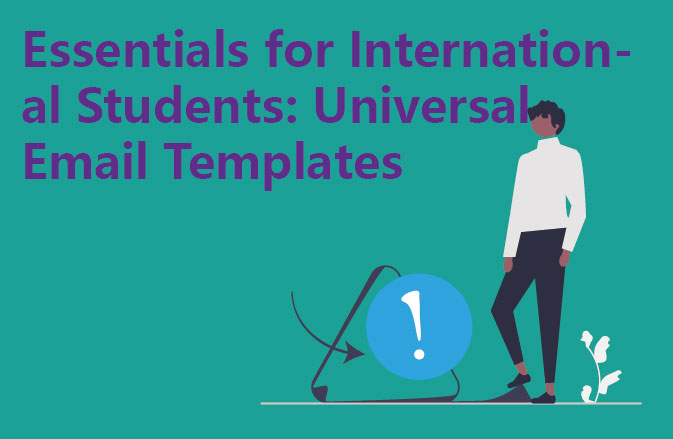1. Themes
[Succinctly summarised and to the point].
The subject should be concise and clear, so that the recipient can quickly understand the main idea.
Summary
[Question] An inquiry about… /about…
[Update] on the progress of
[Agreement] Notice of current schedule/rescheduling and other related matters
2. name
[Appropriate to avoid mistakes]
It is important to check the recipient’s title before sending, especially for emails sent to professors/tutors/teaching assistants/mentors, as typing it incorrectly will have a negative impact.
Summary of words
Dear + Last Name
Distinguished Ladies/All/You/Students/Community Members/Candidates/Admissions Officers
Dear/Dear/Good morning/Quick
Dear/Dear/Good morning/Quick
Note! Hey” is usually used between close friends, so it is less likely to be used in formal situations.
3. Opening Remarks
[Emotional start, show respect].
The opening sentence can ease the hard tone of the email, and convey the respect and kindness of La.
Summary of words
[General greetings] Morning morning afternoon good evening
[General Greeting 2] How is your physical condition…? How is it going?
Self-expression email] I wish you well
After receiving a reply from others] Thank you very much for your reply.
After the other party replies] Thank you for your reply and look forward to your prompt and positive response.
Send again (no reply to the first email)] Hope you are well.
Sorry for the snub/Sorry for not replying to your information in time.
4. Text
[Clearly thought out and coherent]
The body of the text should be clear and precise. If you are covering more than one thing, use typographical segments.
Summarising the language – conveying the intention
I would like to ask/understand/confirm/inform/let you know/announce/invite you…
I would like to ask you about ….
I am curious to know…Could you please tell me? Can you tell me the relevant information?
Commonly used subject sentences in conversation summaries
[疑问求助]May I know, would like to know, am curious about, have a question about, concerning, could you please tell me…? Is it possible for you to?
Check the attachment] Contextualised impacts have been attached for your reference.
Here is the attachment, you can find out more
5. Conclusion
[Appointment Successful] I look forward to speaking to you next week/tomorrow – see you again/next time!
I look forward to hearing from you soon.
(I look forward to hearing from you soon.
Please feel free to let me know if you have any questions or concerns – as soon as it’s useful to you / I’d love your feedback ….
[Appointment Successful] steamforward to speaking with you next week and tomorrow
lAnxiously contaiN Anticipating our impending communication
[Expression of thanks] Thank you in advance for your time.
Thank you for your help and the information you have provided
Thank you for your patience, understanding and care.
6. Endnotes
[Paragraph is indispensable for formal emails, usually located in the line between the body and the closing statement].
It is often said that the last walk of victory or defeat, must be a calm response. It is recommended to establish your own paragraph style, on the one hand, it is easy to show your personal information, on the other hand, it can also avoid writing mistakes.
Summary of words
Best wishes/best wishes/best wishes/wish you all the best
Warm cheers/sincere thanks
Greetings/Thank you again/Cheers/Good luck




